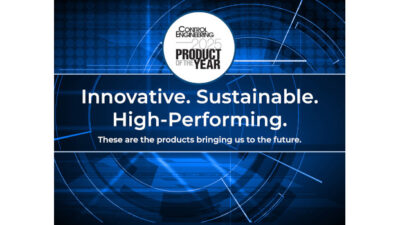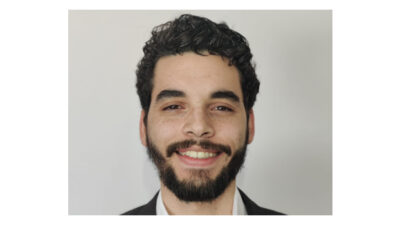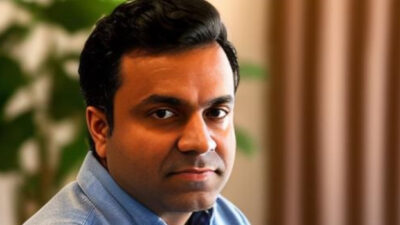Device integration at the world's largest wastewater treatment plant links multiple manufacturers on common fieldbus and management networks.
|
The plant is said to be exceptionally small for its capacity. Singapore real estate is expensive.
|
Singapore is no stranger to showcase projects. Be it a spectacular skyscraper or gigantic ferris wheel, the city is known for its bold undertakings. The latest flagship project in southeast Asia’s smallest tiger economy focuses on the area of water, waste water, environmental protection, and sustainability. In 2009, the Changi Water Reclamation Plant (CWRP) opened, boasting a number of unique, trendsetting concepts. One of those is an FDT-based asset management system overseeing 10,000 field instruments of many makes and kinds in a consistent, uniform, and extremely effective manner.
The CWRP is the centerpiece of Singapore’s project to construct a deep tunnel sewer system (DTSS), a scheme unparalleled anywhere in the world. On June 23, 2009, the wastewater treatment plant officially opened. The plant itself was constructed by international project consultant CH2M Hill using its local Singapore office. Located close to the airport, the extremely compact plant can currently process 800,000 cubic meters (211 million gallons) per day, and will ultimately have a capacity of 2.4 million cubic meters (634 million gallons), using the latest in cutting-edge technology. Perhaps the most revolutionary concept about this plant is that its output will be used in Singapore’s ambitious NEWater process providing one-third of the city’s drinking water needs. High-tech treatment techniques controlled by the most modern automation engineering practices make immediate reuse of the output possible.
System architecture
All the information from field instruments, including pressure, temperature, and level transmitters, along with valve positioners, is routed to the 600 field network interface (FNI) panels via Profibus PA links and couplers, which can cover distances of up to 2,600 meters. Drives, analytical instruments, flowmeters, and actuators are connected via Profibus DP via Sekopia connectors and optical link modules. From the fieldbus network, information is transmitted to 49 PLCs (programmable logic controllers) located in air-conditioned rooms throughout the plant. These controllers, which are the heart of the plant, provide all process control and communicate via Ethernet TCP/IP and a redundant fiber optic ring with the FDT (Field Device Tool) server and asset management and SCADA (supervisory control and data acquisition) I/O servers in various systems.
The plant includes a huge variety and number of field devices:
-
500 magnetic flowmeters;
-
400 thermal mass flowmeters;
-
400 transmitters for pressure and differential pressure;
-
140 radar and ultrasonic level transmitters;
-
50 optical suspended solids transmitters;
-
40 dissolved oxygen analyzers;
-
100 temperature transmitters;
-
5,000 electric actuators;
-
400 pneumatic actuators;
-
400 variable speed drives;
-
100 motor control centers;
-
600 switches and samplers, and
-
Approximately 100 Profibus masters.
It was the project consultant’s aim to use FDT-based asset monitoring to ease routine maintenance work. “We chose to use FDT technology as an open solution in which the operator is not restricted to any specific manufacturer,” explains chief resident engineer (MCS) Jane Goh. The only condition was that the vendor had to make a DTM (device type manager), a device driver for the FDT technology, available for every device. Instruments from 15 manufacturers met that condition and work in unison providing individual DTMs to operate in the FDT framework. Within the multivendor plant, there are devices from ABB, Auma, Emerson Process Management, Endress+Hauser, Fluid Components International, ProSoft, Rotork, Schneider Electric, Siemens, Smar, Vega, and Yokogawa.
CWRP is also one of the biggest Profibus installations in the world with 7,000 Profibus DP and 2,500 Profibus PA instruments in the plant. Nearly 6,000 signals have been cabled discretely via Profibus DP remote I/Os. To make this possible, technicians laid a total of 200,000 m of copper cable and 100,000 m of fiber optic cable for the Profibus DP network. Additionally the PA network uses another 60,000 m of fiber optic cable.
Challenges for asset management
The question of asset management presented plant designers with serious challenges, as every field device manufacturer makes different tools for calibration. For end users this means that they have to be familiar with a large variety of tools that are expensive to maintain and operate. Furthermore, no real-time information is available to maintenance technicians to help them manage their activities. The situation is made worse when different systems or communication protocols operate in parallel, performing similar functions with no interaction.
FDT ultimately presented a solution to integrate asset management, independent of the fieldbus networks. This is made possible by advanced functions that are stored as active software components in the DTMs. The FDT standard forms the basis to integrated, information-oriented solutions that cover every level of the automation pyramid, from field devices to the enterprise systems of a business. FDT allows openness and interoperability of field devices and systems for engineering, diagnosis, and asset management tasks alike. Standardized fieldbus protocols guarantee communication between intelligent field devices and the higher-order systems.
FDT defines the interface between the information embedded in field devices and the engineering tool of the control system, but does not affect the field devices themselves. The open technology allows users to integrate a wide range of products, such as sensors, valves, drives, and low-voltage switch gear. Each product’s manufacturer is responsible for the information provided by the device via the DTM. The cross-vendor solution is supported by many manufacturers of instrumentation and control systems.
DTM operation
The device-specific software component is known as the DTM, which can be integrated in an engineering tool or a system environment. The DTM maps the configuration, diagnostics, and other functions of the device. The software knows the possibilities and limits of the device and contains all the dialogs to communicate with users as well as all the graphic displays.
One further advantage is that device-specific documentation can be created per DTM.
Integrated information
DNR Process Solutions, a large process design consultant and system integrator in Singapore, provided the solution. The company characterizes its role as helping improve efficiency of operations and product marketing by providing real-time information and customized process automation solutions in both existing and new process plants.
DNR was actively supported by Ifak System of Magdeburg, Germany. Ifak specializes in industrial communication and distributed automation systems, and has developed specific expertise in process simulations for wastewater treatment facilities. The two partners worked together to develop the field intelligence FDT-based asset management system which had to meet a group of strict customer-imposed requirements and objectives:
-
The software has client/server architecture that allows up to 10 users simultaneous access to the desired information from any location via the Internet.
-
The system facilitates remote configuration, diagnostics, and supervision of all devices that are linked to open communication protocols such as Profibus or HART.
-
Data can be saved in a central maintenance management system.
On the basis of operational findings with regard to the availability and utilization of the individual assets in real time, the system has helped boost the efficiency of the plant. The asset management system successfully overcame the challenges and passed tests with flying colors.
| Author Information |
| Christine Eckert, Ph.D., is a journalist working with Ifak System and FDT Group. |



